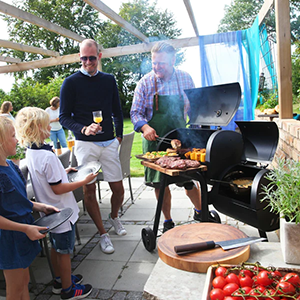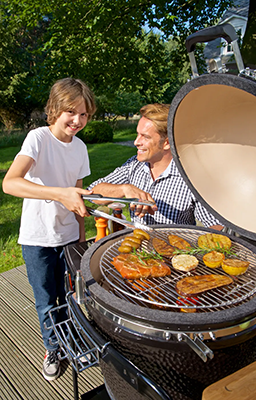Which barbecue is best to choose?
That question cannot be answered one, two, three. The answer depends on several factors. I talked earlier about the difference between various styles: do you want to grill, barbecue (indirect grilling) or smoke? In addition, fun plays an important role. For some, this is playing with fire and the associated pure barbecue experience, but for others, (cleaning) convenience is much more decisive.
Next, you need to ask yourself how often you want to get started with the barbecue and how many guests you want to provide food for. If there are usually only two of you, then of course it makes little sense to purchase a huge BBQ. Conversely, for an entire family, you won’t get far with a compact table-top barbecue.
The most versatile barbecue is a smoker. With that, you can really cook meat through smoke, and such a device offers a lot of space for products. Once you have a large party of guests, you can also use the smoking chamber for (indirect) grilling.
The easiest for almost always perfect cooking is a kamado because the temperature can be controlled very precisely and because this barbecue can generate very high temperatures.
From an environmental point of view, the pellet barbecue is preferable, while even with such a barbecue the temperature is very easy to control. The disadvantage is that an electricity connection is required.
If you want good barbecue without hassle and without too many cleaning problems, then a gas barbecue is the best solution. Certainly the larger (and more expensive) models are all-rounders (often with additional features). Smoking alone is not really possible on a gas barbecue, but through such tools as a smoker box with wood moss can be approached.
With a bullet or kettle barbecue, you have a great appliance for (indirect) grilling, but the options are a little more limited and the operation a little more complicated. On the other hand, it is also often the most economical choice.
Regardless of which barbecue you choose, always look first and foremost at quality. Barbecues not only come in many shapes and sizes, but also in all kinds of quality classes. If you are going to use your stove very intensively, choose an admittedly more expensive model made of thicker metal.
These days you can buy an impressive-looking barbecue with bells and whistles for as little as a trifle. Unfortunately, these not infrequently turn out to have cures after only a few uses. Such as rust stains and lids not sealing properly. With reputable A-brands, you won’t have those kinds of complaints and you’re also assured of a warranty.
Another thing to keep an eye on when comparing models is the diameter that suppliers list: in fact, many tend to list the outside dimensions rather than the diameter of the grill grid. Especially with a kamado, that’s a substantial difference.







